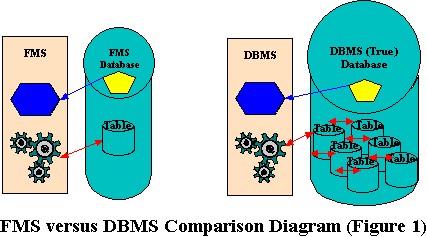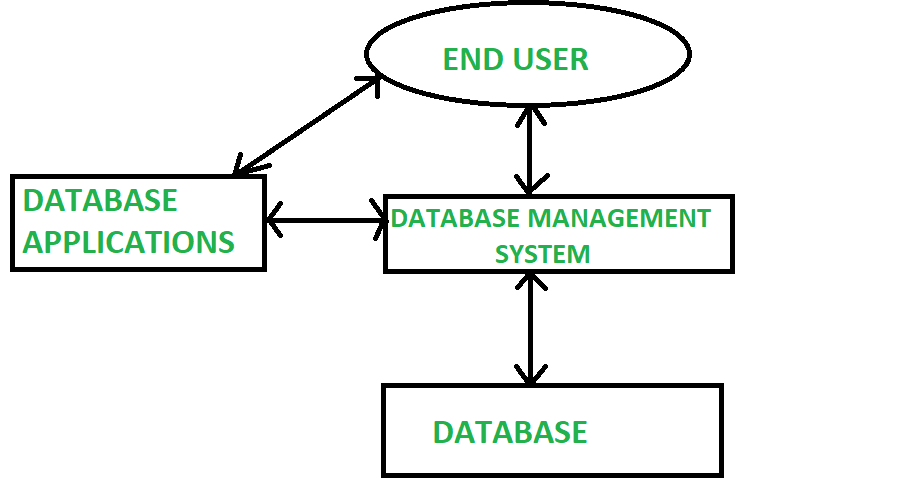Table of Contents
PC running slow?
In this guide, we describe some of the possible reasons why a file system can be used as a database, and then I suggest possible ways to try to fix this problem.
Why A Database File System?
Is a file system a database?
A database is commonly used to store related data, structured withAs defined data formats, in an original way for insertion, updating and / or sorting (depending on the application). On the other hand, a file system is a flat storage medium for storing arbitrary, possibly non-contiguous, data.
Conceptually, each database file is a system, a file schema interface, placed above the files and directories stored in the tables of the website.
Is a file system a database?
A file system is a collection of raw data files stored on disk, while a database is designed for extreme organization, storage, and retrieval of large volumes Data. In other words, a database contains an organized set of data, usually in digital form, for one or more users.
Applications typically use standard SQL data styles, BLOB and CLOB to store and include files in an Oracle database, file variants such as medical images, invoice images, documents , clips and other files. Oracle Database provides significantly higher levels of security, availability, reliability, transaction capacity, and therefore scalability, compared to conventional file systems. Files stored in a relational throughput database are automatically backed up and synchronized with the user’s disaster recovery site using Data Guard to restore them together.
The database file system (DBFS) is a key feature of Oracle Database,which simplifies user access and limits the files stored in the database. With this interface type, access to database files is no longer restricted to programs written specifically to use the BLOB and CLOB APIs. The database files are now transparently accessible by any operating system (OS) program that works with the files. For example, ETL (extract, transform, and load) approaches can transparently store intermediate files in some databases, and file-based applications can use database features such as the maximum availability architecture without (maa) modifying those applications.
Which Database Is A File System (DBFS)?
The Database File System (DBFS) creates a default file system location for files and directories that are stored in database tables.
Does CMS use a database?
An article or blog management system (CMS) is an application used to manage web content and allows multiple contributors to try to create, edit, and publish it. Their CMS content is usually stored in another database and displayed at the delivery layer based on a set of templates.
The Database File System (DBFS) creates a default file system city with the server and clients.
About DBFS
DBFS Server
DBFS Client
About DBFS
DBFS looks likeon NFS in that it provides a shared Instigate network system that resembles a local registry system and has both a server system and a client component.
The core pointing to DBFS is the DBFS API, the contents of your own PL/SQL interface in an Oracle database. Connects it to DBFS Content SPI, a huge API that provides support for various types of storage.
PC running slow?
ASR Pro is the ultimate solution for your PC repair needs! Not only does it swiftly and safely diagnose and repair various Windows issues, but it also increases system performance, optimizes memory, improves security and fine tunes your PC for maximum reliability. So why wait? Get started today!

Legally, a client calls the DBFS Content API to perform a specific function, such as deleting a file. The Delete File DBFS Content API function then calls the DBFS Content SPI to do the job for you.
How DBMS is better than file system?
A DBMS is a collection of data. The DBMS provides a Fender-Bender repair mechanism, i.e. H. The DBMS usually protects the user from system failures. The file system does not mean a failure, that is, if the system crashes while entering data, the contents of the file page will be lost. The DBMS offers a good protection mechanism.
In a custom DBFS, the user must enable the delete feature based on its specification in the DBFS Content SPI, as well as other features in the specification.
DBFS Server
The files are randomly stored as LOB SecureFiles in the conference tables in the database. The file system implementation for the entire database is called the DBFS item store, such as the DBFS SecureFiles Store. The DBFS content store allows each user of the client base to create one or moreHow many image systems the target audience can mount. Each system file has its own specialized tables containing the contents of the system file.
SPI Content DBFS supports the following storage types:
DBFS SecureFiles Store: A DBFS content store that uses a table in the SecureFiles LOB to store its file system data in columns. It implements POSIX-like file system functions. See Create your own DBFS store.
DBFS hierarchical storage: DBFS content storage where files can be written to good tape storage devices supported by Recovery Oracle Manager (RMAN) or a cloud storage system. See DBFS Hierarchical Storage. Storage:

A custom content store defined by the user. This allows users to program their actual Oracle file systems inside the database without having to write operating system code.
See Creating a custom DBFS store to describe the SPI of DBFS content.
DBFS Client
For fa systemsThe global database system provides several access methods.
PL/SQL client interface
Database services can directly access DBFS storage files through a PL/SQL interface. The PL/SQL interface allows database transactions and sequential reads starting from relational and file data.
DBFS client command line interface
A client command line interface named dbfs_client is run for each client’s personal system file. dbfs_client allows users to copy files to and from the database from any host on the network. It implements easy-to-understand filesystem commands such as list and even copy, similar to the ls and rcp shell utilities. The command interface creates a direct connection to use the database without having to mount the DBFS on the operating system. Using DBFS.

File system mount interface
On Linux and Solaris, dbfs_client is also included in the mount interface, which uses the Filesystem in User Space (FUSE) kernel module to mountFile system definitions. mount with obvious access to files stored in your current database. It does not require any lifestyle changes to the Linux or Solaris kernels. It receives standard file system calls from this FUSE kernel module and translates them into OCI calls to PL/SQL procedures for DBFS memory content. See Installing “dbfs interface (Linux and Solaris only)”.
How do I create a database file system?
Add a hard drive to the system if you suspect your current hard drives are running low on free space.Define and divide our own territory for use.Create a directory system.Mount the filesystem you are using.If you need to add a hard drive to a healthy system, see your hardware documentation.
DBFS links
DBFS database links, file system links, are pointers through SecureFiles LOB locators to files stored in the garden database.
DBFS links can be used to migrate actual SecureFiles from existing tables to various other stores. For more information on using DBFS links in conjunction with “PL/SQL Packages for LOB and DBFS”, see “Database File System Links”. Checklists of useful constants and methods DBMS_LOB.
What Is Content Storage?
Each content store is explained by a unique absolute path, rendered as a slash (/) followed by a type or several component names, almost all of Which are separated by a slash. Some repositories only implement a flat namespace, others may implicitly implement directories or folders, and third sites always implement the full set of system entities. This can include ordered directories, files, symlinks, hard links, resources, etc. They often contain a lot of log-related metadata and a lot of security, access control, blocking, versioning, content addressing activities. , storage control, etc.
Which is better file system or database?
A file handling system is a library of programs that store and manage formats on a computer’s hard drive. On the other hand, a database management system is a set of programs that help create and maintain a database. The file processing system has much more data redundancy, less data redundancy for the DBMS.
How do I create a database file system?
Add a hard drive to the system when there is not enough space on the current hard drives.Determine and divide the space that should be used more.Create a file system.Prepare the file body for use.Refer to the hardware documentation if you need to add a hard drive to your amazing system.
Does CMS use a database?
CMS stands for Content Management System. This is a database for publications. Most CMSs use a real database because of the directory store, and some are similar to the mail store.
Olika Felsökningsmetoder För Att Använda Filsystemet Som Den Perfekta Databasen
Различные методы устранения неполадок при использовании файловой системы в качестве базы данных
Diverses Méthodes De Dépannage Pour Utiliser Le Système De Fichiers Exact Comme Base De Données
Varios Métodos De Solución De Problemas Para Usar El Sistema De Archivos Como Una Base De Datos Particular
파일 시스템을 데이터베이스로 사용하는 것과 관련된 다양한 문제 해결 방법
Vari Metodi Di Risoluzione Dei Problemi Relativi All’utilizzo Del File System Come Database
Verschiedene Fehlerbehebungsmethoden Für Die Verwendung Des Dateisystems Als Datenbank
Różne Metody Rozwiązywania Problemów Dotyczące Ogólnego Używania Systemu Plików Jako Bazy Danych
Verschillende Methoden Voor Probleemoplossing Om Het Bestandssysteem Als Database Te Gebruiken
Vários Métodos De Solução De Problemas Para Usar O Sistema De Arquivos Como Banco De Dados